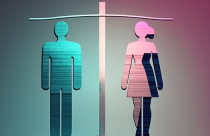Gender Disparities in STEM: What You Need To Know

Gender discrimination in science, technology, engineering, and math (STEM) fields is a problem that is now well recognized. There are even reports that state that the gender gap in STEM has been getting smaller since the early1990s. More women are getting degrees and jobs in STEM fields than ever before. However, the situation may not be as good as reported.
Women are still less likely to choose STEM majors and get STEM degrees and jobs than men. This is true even though women do as well or better than men on STEM tests and projects. The disparity is strongest in the physical sciences, computer science, math, and engineering. Women make up only ~20% of students in these majors in the U.S. The number of women majoring in computer science has decreased since the 1990s. A smaller percentage of women get jobs in those fields. Women who work in STEM fields report more gender discrimination at work. This is worst for women with advanced degrees and in STEM fields where men outnumber women.
Effects of Gender Discrimination in STEM
The effects of gender discrimination in STEM are far-reaching. Women may experience the world differently than men. They may bring a different perspective to STEM jobs. The complex challenges facing the world today need creative solutions. These can come about when people from different backgrounds come together. This means gender discrimination in STEM may hurt human progress. A report on how this problem could hurt Scotland’s economy has been reported.
Another effect of gender discrimination in STEM is that it promotes itself. There are fewer women in STEM majors and STEM jobs. This means the current generations of girls have fewer female role models in STEM than boys do. People also get used to the idea that women are less likely to be in STEM fields. It feels natural and then mandatory. The result is a society where the prescribed roles differ for boys and girls. It is also one that perpetuates gender discrimination in STEM jobs. Many would see this as a less fair, equal society.
Causes of Gender Discrimination in STEM
There are many possible causes of gender discrimination in STEM. One is that traditional ideas are still around from the past when men and women had very different roles in society. Women were supposed to stay home and take care of family matters. Many still feel that way today. The idea is that women are “naturally” more interested in people, less so in objects and abstraction. Caretakers and teachers may hold these beliefs and treat girls differently. These social ideas affect girls’ attitudes about their interests and abilities. It can undercut their self-confidence in STEM fields.
Additionally, girls may perceive STEM classes as less inviting or hostile. The same may be true of women’s perceptions of STEM jobs. But social differences may not be the only causes of gender discrimination in STEM. For example, Finland is a country with generally low gender inequality. Yet, it has a very large gender gap in “non-organic” STEM fields. This contrasts with Algeria, where women earn ~40% of STEM degrees. In many low- and middle-income countries with traditional social norms, a greater percent of engineering degrees is earned by women than in high-income countries. Biases in hiring, peer-review, and authorship may hurt women’s chances to be hired for STEM jobs and advance in them. Creating awareness about this issue may help in changing people’s attitude and initiating a positive change. Possible solutions to address gender bias have been discussed here.
What are your opinions on the gender bias in STEM? You can leave your views in the comments section below.









